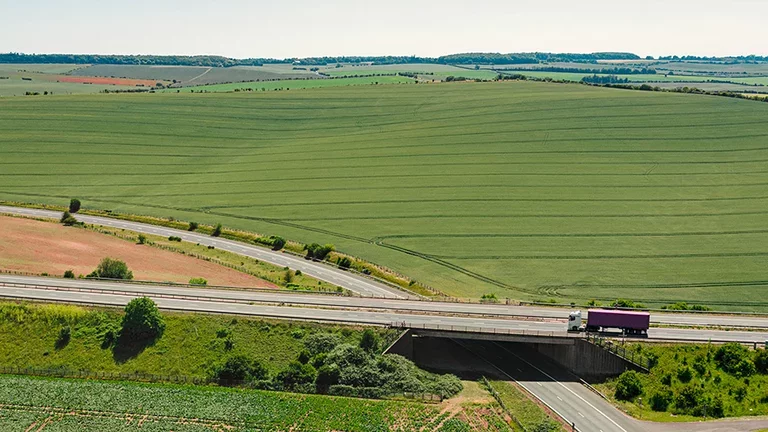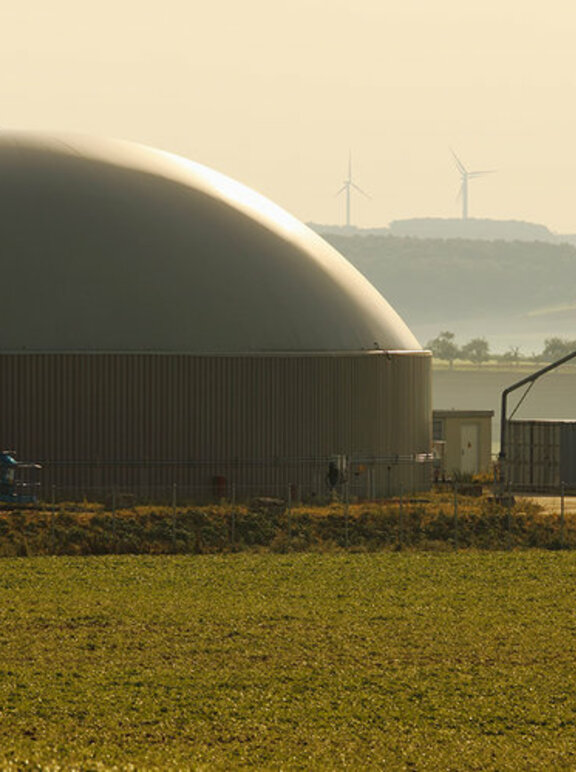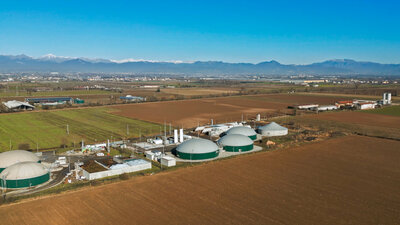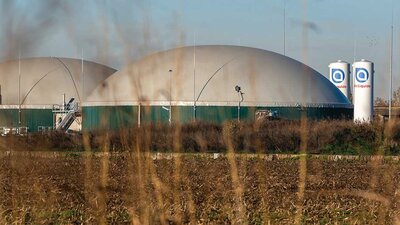Naturally gas!
How biomethane is playing a key role in the UK energy mix
Published on August 05, 2021
5 minutes

Biomethane is an upgraded form of biogas which can be used to fuel trucks, fed into the grid or used for industrial applications in place of fossil-based natural gas. Moreover, as it is produced from waste products, this renewable form of natural gas has a highly positive environmental impact. These characteristics have not gone unnoticed, as the UK government regulations begin to favor biomethane and business to discover its potential. Developments which, with its strong position in the market, Air Liquide is driving forward.
Already present in the UK market, biomethane has experienced a fast evolution in recent years. Between 2019 and 2020 alone, for instance, the Gas Vehicles Network registered a 78% leap in the number of gas-powered heavy goods vehicles (HGVs) in the UK fleet – which, in stark contrast to its European counterparts, is only 7% reliant on natural gas from fossil sources. That’s because the primary source of fuel for gas trucks in the UK is environmentally-friendly biomethane, a purified biogas which also has the potential to substitute fossil gas in the UK domestic gas heating grid and several large-scale industrial applications.
Most organic matter can be turned into gas. To make biogas, a feedstock composed of agricultural produce or waste is broken down in an oxygen-free environment – a process known as anaerobic digestion.
By filtering off the carbon dioxide and other contaminants in the resulting biogas thanks to an Air Liquide proprietary membrane technology, pure methane can be produced. This biomethane, also called renewable naturalgas, is of the same purity and has the same energy content as natural gas from fossil sources. As such, it can be injected straight into the grid or used as fuel.
With 85% of UK homes connected to the country’s extensive gas grid, replacing even a small percentage of natural gas with biomethane would have a major impact on the country’s carbon emissions. What is more, the fact that biomethane can be substituted everywhere where natural gas is used makes it a carbon-neutral source of energy for industrial processes which cannot be electrified, for instance. And for road-hauliers and retailers with logistics operations, biomethane is already helping them to cut emissions in their truck fleets.
Of course, the environmental benefits of biomethane are dependent on the feedstock used to produce it. “When we at Air Liquide began looking at biomethane around 2014,” says David Hurren, UK CEO Air Liquide Biogas Solutions Europe, “it was clear that we had to avoid impacting land use. As such, the Air Liquide biomethane solution is based wholly on organic waste streams such as food waste, and industrial residuals. Although I should specify,” he cautions, “that we don’t like the term ‘waste’: what we’re actually talking about are resources for the green energy transition.”
Capitalizing on increasing refuse separation
Most local councils now offer food waste bins, and the new environment bill scheduled for 2021 is expected to make separating food waste – both from general refuse and from other organic garden waste – mandatory by 2023.
“In Scotland,” notes Hurren, “there is already a ban on food waste going to landfill. It might not be 100% effective, but we estimate that around 70% of kitchen refuse and spoiled food is now being separated north of the border. There is also food waste from the hospitality industry,” adds Hurren, “and another important source of feedstock for Air Liquide biomethane is agricultural waste, which represents 60% of the market overall, too.”
The increasing availability of resources is clearly one of the driving forces behind this acceleration. Technology is another. “When we started five years ago,” recounts Hurren, “biomethane was an interesting, but somewhat speculative area to explore. Now, it’s an integral part of the green energy strategy.” The original proprietary Air Liquide product was a membrane for filtering biomethane out of biogas – an important prerequisite in the UK market. “Compared to, say, its French counterpart, the UK grid has high feed-in standards – 99% CH4 – so producers of biogas looking to sell to end users often need help upgrading their product and then connecting to the grid.”
Expanding downstream – and back upstream
As of early 2021, Air Liquide has carried out 35 installations across the UK, and is currently finishing its tenth production unit as purification plants for biogas to biomethane are called. “At first, we concentrated on down-stream, partnering with companies to help them feed gas into the grid,” says Hurren, but increasingly, Air Liquide is moving up-stream, too, to actually produce biogas by operating digesters. “This opens up the potential for circular solutions in cases where retailers or industrials create potential feedstock on site,” says Hurren, citing France, where there is a circular economy biogas model already in action, as a potential source of inspiration.
For David Hurren, the momentum has become tangible in the growth of his staff: “We’ve gone from a team of one person on secondment to almost 40 people based in the UK in just five years.” And both for Air Liquide as well as the renewable natural gas market in the UK more broadly, 2021 is shaping up to be a truly transformative year. With the UK hosting COP26 in autumn, it has been announced that the sale of petrol and diesel trucks between 3.5 and 26 tonnes will be banned from 2035. Larger ones weighing more than 26 tonnes from 2040. The global target for carbon-neutral transport in the country is 2050.
“Compared to diesel, biomethane reduces emissions of CO2 by around 90%, of noxious particles by 85%, and of noise by around 50%,” explains Hurren, “so it’s no surprise that many of our clients are switching their fleets to biomethane gas trucks as part of their efforts to cut their carbon footprints.” Such as ASDA, Waitrose, and John Lewis, who are just some of the UK retailers running new fleets of biomethane-fuelled trucks supplied from Air Liquide biomethane production units.



